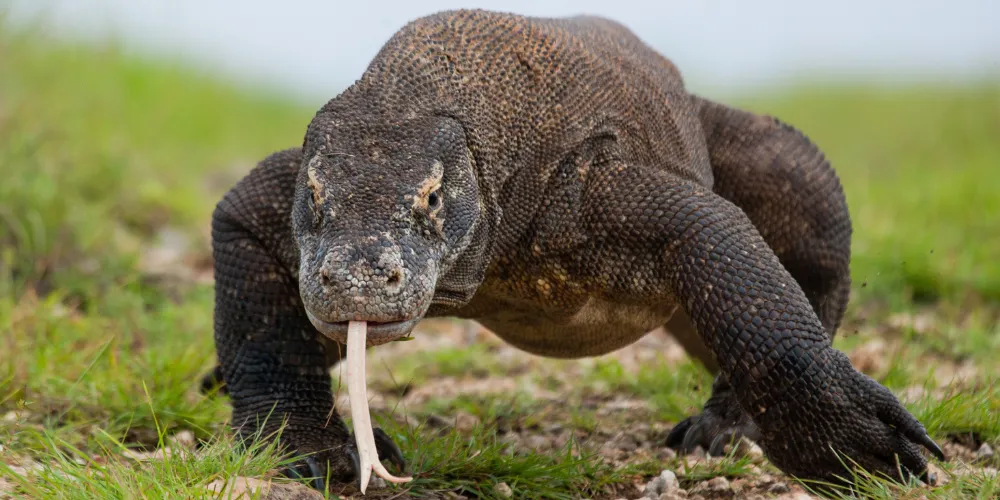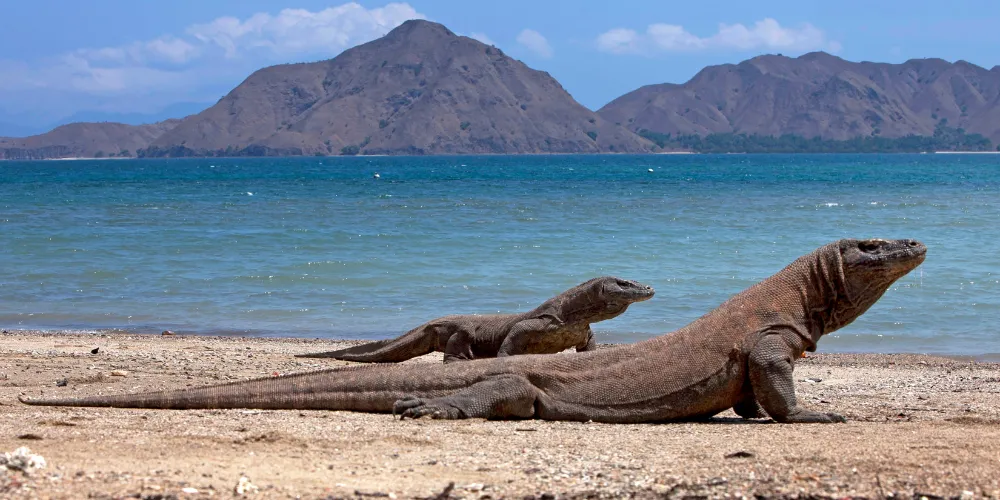Few animals out there have a mystique surrounding them like the Komodo Dragon. Most people know they’re dangerous, but some wonder, “Are Komodo Dragons edible?”
People can eat Komodo Dragons. Their meat isn’t tainted or poisonous, as their venomous reputation comes from their bite rather than their flesh. However, venturing out to grab a bite to eat could be costly since they are on the endangered species list and are protected.
About the Komodo Dragon
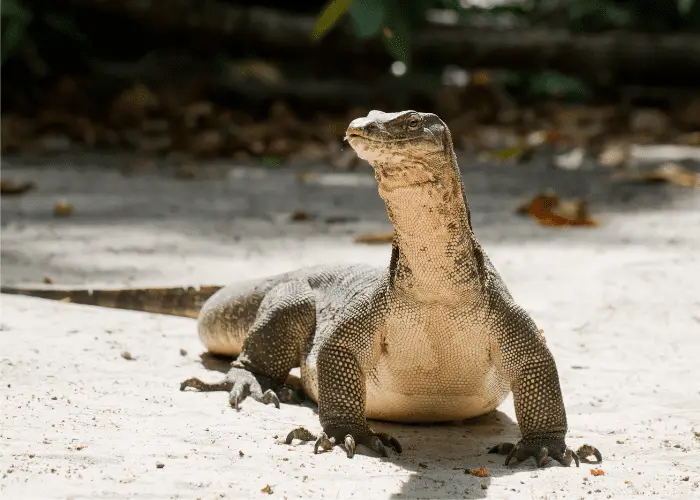
The Komodo Dragon is the largest species of lizard in the world. Thus, giving them the distinction “the Kind of the Lizards.” These creatures can get to about 10 feet long and, on average, weigh around 180 pounds, but have been recorded to reach up to 300 pounds!
Are Komodo Dragons Poisonous?
Komodo Dragons are not poisonous but are venomous. You can touch them, eat them, and handle them without being poisoned as you might by some amphibians, fish, or plants.
If you get bit by one, however, you’re in trouble. The mouth of a Komodo Dragon is a cesspool of bacteria from rancid meat stuck in its shark-like teeth, along with a culmination of 50 different strains of toxin that excretes into their saliva.
Suppose you’re initially lucky enough to survive being bitten, having found safety somewhere out of reach of the Dragon. In that case, you’d have a short space before the bacteria overtake your bloodstream, causing death.
What do Komodo Dragons Eat?
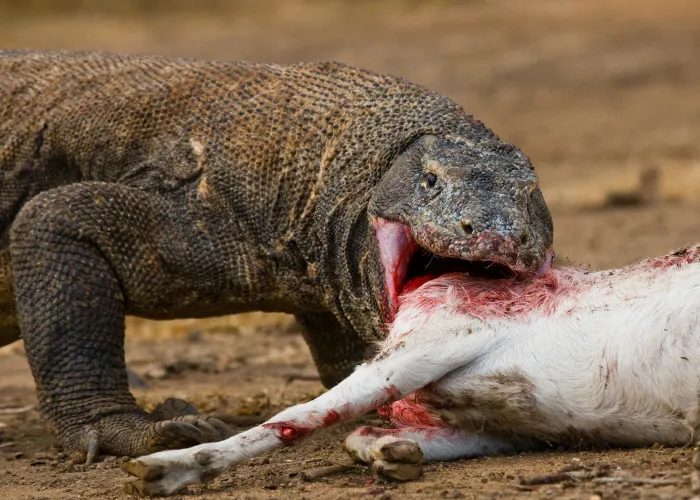
Their tenacity, mingled with their venom and sharp teeth, allows them to attack and take down prey much larger than themselves. In one meal, a Komodo Dragon can consume up to 8% of its body weight due to its stomach’s expansion capabilities.
What do they eat?
The quick answer is that they’ll eat anything that moves in their natural habitat- the Komodo Islands. The longer answer is deer, pigs, wild boars, rodents, other lizards, monkeys, goats, water buffalo, snakes, birds, and other smaller Komodos.
Adult Komodos are the apex predator in their environment. They are the hunters rather than the hunted, so they worry little about being on the wrong end of the food chain (at least on land). But before adulthood, they are on the menu of other creatures able to make a quick meal out of them before they become dangerous.
Though Komodo Dragons are fierce carnivores, they will step outside that role from time to time and snack on fruits, leaves, and different types of grasses.
Juvenile Komodo Dragon Survival Techniques
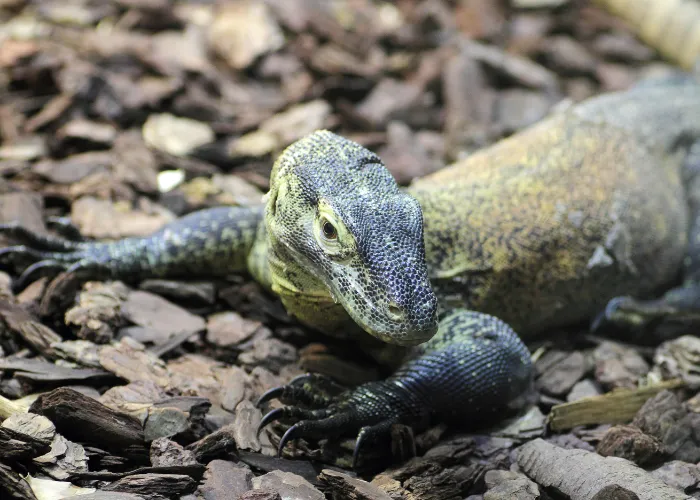
Adult Komodos will resort to cannibalism for an easy meal, so youngsters adopt survival techniques to give them a better chance to escape the senses of their elders. For the most part, all of these have to do with their sense of smell.
These lizards have an incredible sense of smell through their nostrils and also through holding their tongue out in the air. Their sense of smell is critical to hunting hardware when things aren’t visually obvious.
So, to escape this particular sense, the juvenile Komodo will roll around in its feces or the feces of another Komodo to overpower its scent, keeping it hidden in that regard.
Another technique they use is to hide inside the intestines of prey, as the Komodo Dragons will likely not consume that part of an animal unless there’s no meat left.
Do Indonesians Eat Komodo Dragon Meat?

Sure, in the past, there have probably been chunks of tribal history when people would hunt, kill, and eat Komodos. However, they are revered by most tribal people on these islands because they believe that the Komodo Dragons are in some way related or reincarnations of their fallen ancestry.
So, all other reasoning aside, natives of the islands or tribes don’t want to be caught eating a potential ancestor- or even someone else’s. But, if you do catch the locals dining on giant lizards, it won’t be the Komodo, but would instead be Monitor Lizards.
Monitor lizards (the Asian Water Monitor) resemble Komodos in many ways but are more abundant and less protected. Even still, few locals would prefer a monitor lizard meal over other, more popular choices. The wide variety of fish, for example, would be preferred over eating a lizard.
Komodo Dragons are an Endangered Species

Komodo Dragons are extremely rare and are only found in their native land at the Komodo Islands, mostly at the Komodo National Park. Though these critters are large and often on the hunt, they rarely run into people. But when they do, there’s often a casualty on one side or the other. Either a person becomes a casualty, or the Komodo does.
Despite being protected for quite some time, their numbers are still declining. In 2021, an article from the New York Times reported that the Komodo has shifted from being vulnerable to being endangered of being extinct.
Hunting or poaching any protected species is punishable by law. In terms of the Komodo, anyone caught either poaching, illegally trading, or possessing a Komodo can wind up in prison for up to five years and fined up to $7,000.
Poachers go after Komodos not necessarily for their meat but sell their skin for leather and their claws and teeth for jewelry. Then you have others simply lacking that particular animal in their trophy portfolio and run the risk of jail time to say that they’ve taken one down.
Final Thoughts
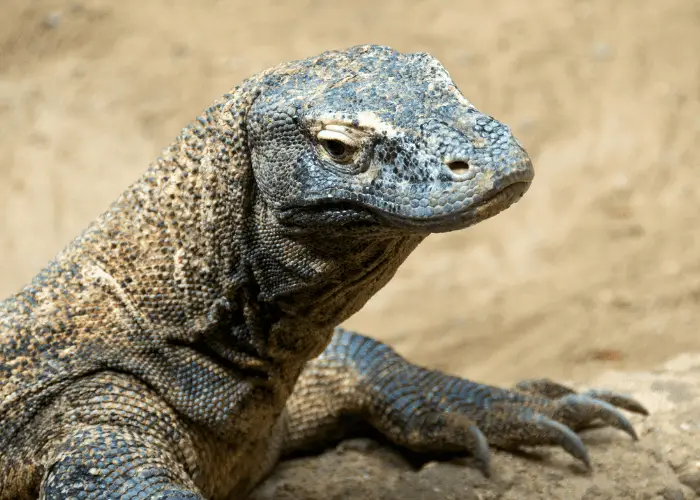
So, yes, it’s possible to eat a Komodo Dragon. But why run the risk of prosecution (and no shortage of persecution from conservationists) to fill the gullet?
Besides, predatory animals are notorious for being gamey and not-so-tasty without all kinds of conditioning or prep. It can be assumed that the Komodo wouldn’t be any different.
And suppose you have an itch that you can’t scratch and have to eat a giant lizard.
In that case, the unprotected and far more plentiful water monitor lizard is available for the taking- depending on which parts of Indonesia you wind up in.
Who’s to say whether they’d be any less edible or tasty than the Komodo Dragon?

